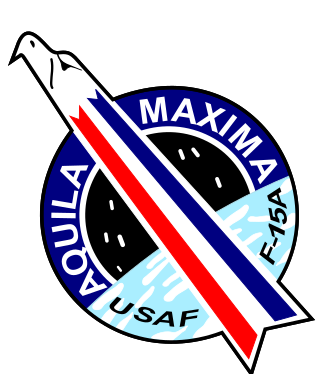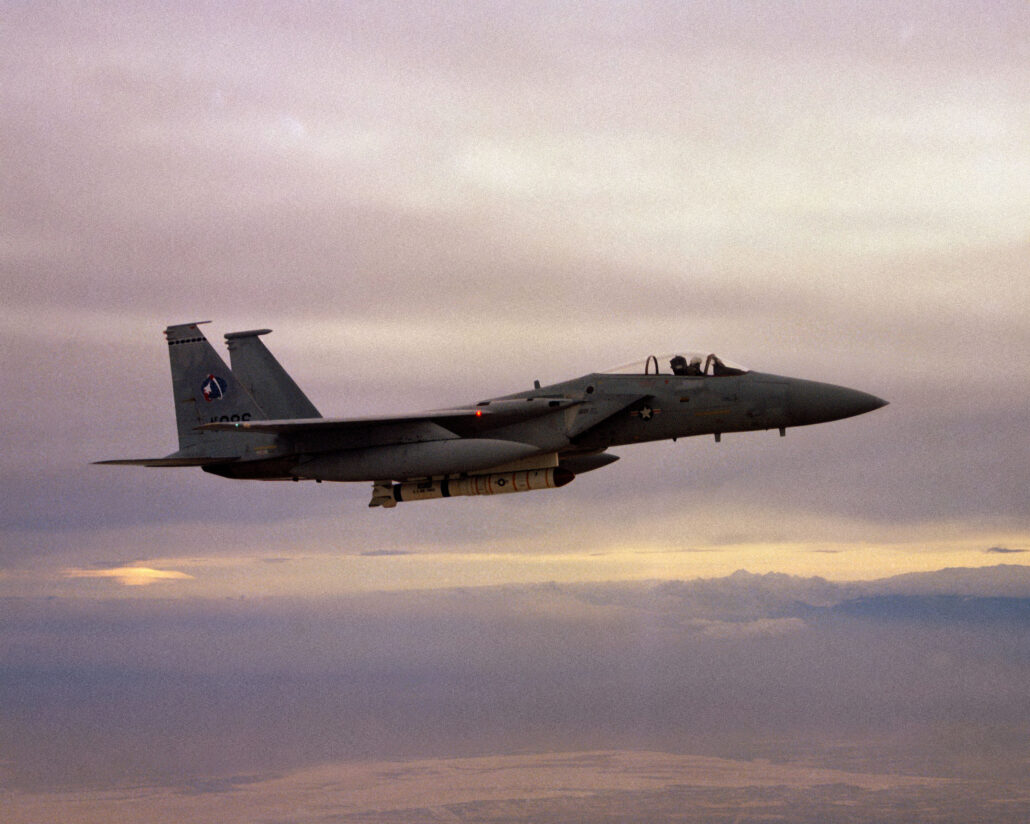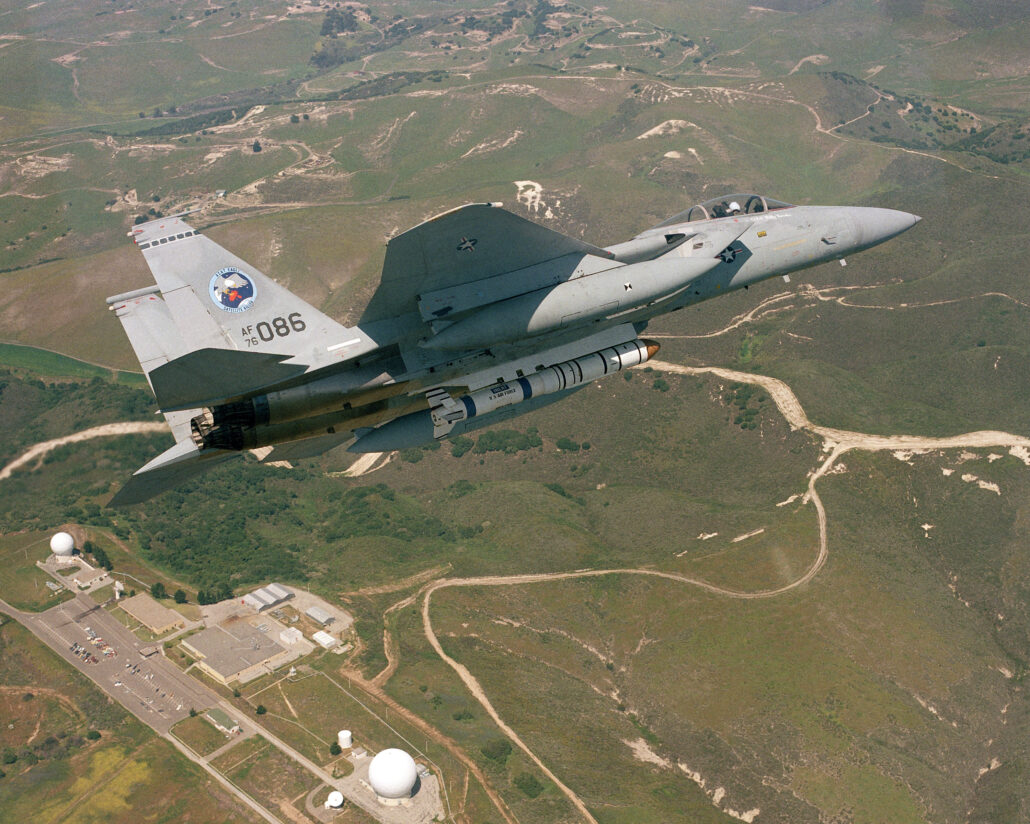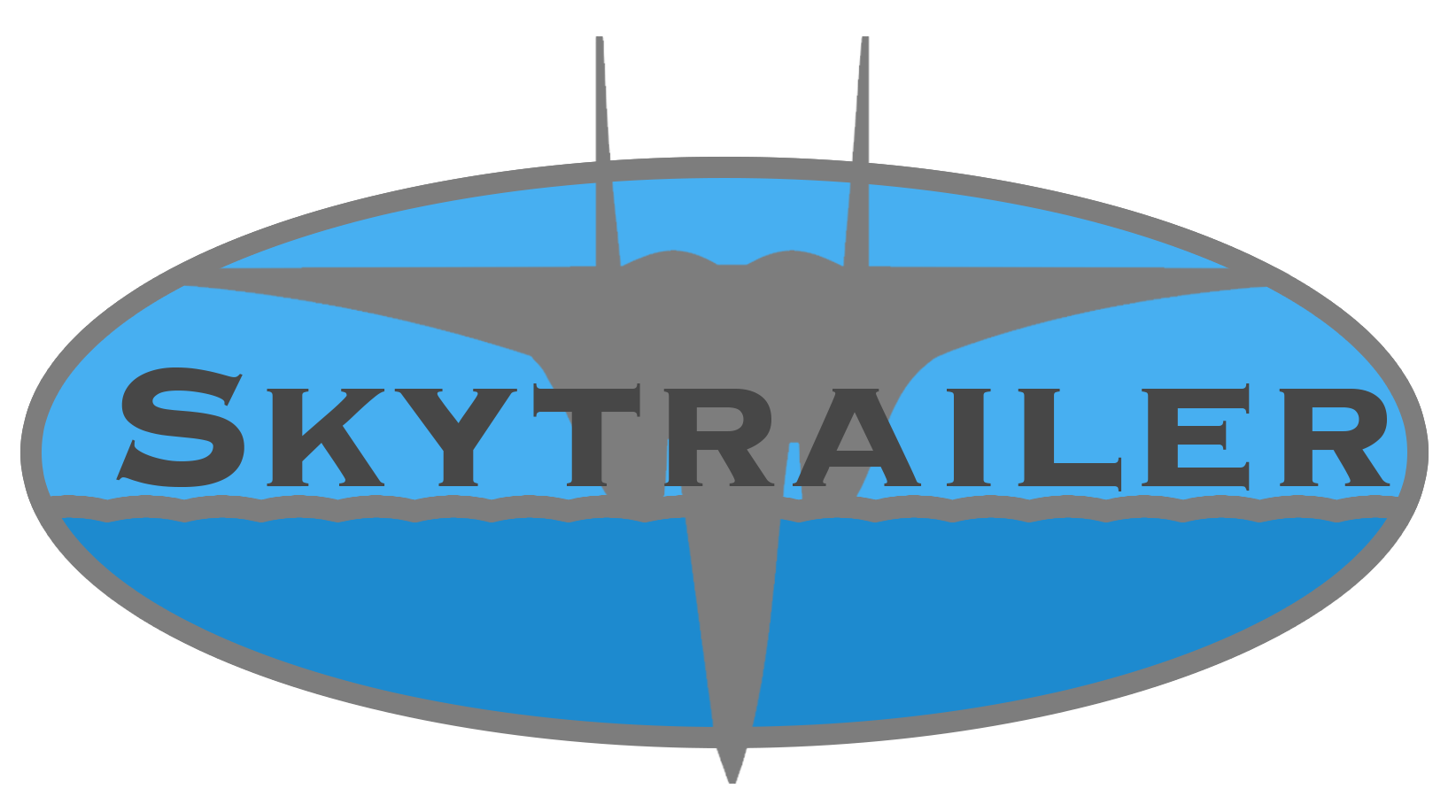The F-15’s high thrust to weight ratio (which amounted at about 1,04 for a nominally loaded F-15) the Eagle was selected to perform the satellite killer mission.
In the late 1970s, the U.S. anticipated Soviet development of “killer satellites” that could destroy vital U.S. reconnaissance and communication satellites.
To counter this threat the U.S. developed the ASM-135 Anti Satellite Missile. The ASM-135 was designed to be launched from an F-15A in a supersonic zoom climb. The F-15’s mission computer and heads-up display were modified to provide steering directions for the pilot.
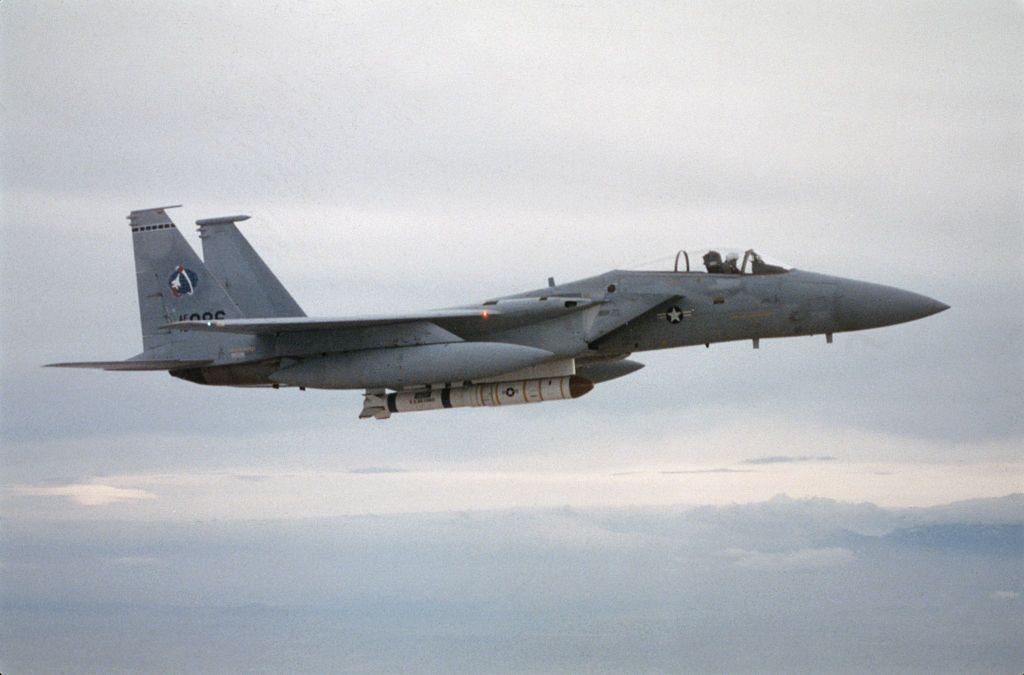
A modified Boeing AGM-69 SRAM missile with a Lockheed Propulsion Company LPC-415 solid propellant two pulse rocket engine was used as the first stage of the ASM-135 ASAT.
The LTV Aerospace Altair 3 was used as the second stage of the ASM-135. The Altair 3 used the Thiokol FW-4S solid propellant rocket engine. The Altair 3 stage was also used as the fourth stage for the Scout rocket and had been previously used in both the Bold Orion and Hi-Hoe (Caleb) anti-satellite weapons efforts. The Altair was equipped with hydrazine fueled thrusters that could be used to point the missile towards the target satellite.
LTV Aerospace also provided the third stage for the ASM-135 ASAT. This stage was called Miniature Homing Vehicle (MHV) interceptor. Prior to being deployed the second stage was used to spin the MHV up to approximately 30 revolutions per second and point the MHV towards the target.
A Honeywell ring laser gyroscope was used for spin rate determination and to obtain an inertial timing reference before the MHV separated from the second stage.[12] The infrared sensor was developed by Hughes Research Laboratories. The sensor used a strip detector where four strips of Indium Bismuth were arranged in a cross and four strips were arranged as logarithmic spirals. As the detector was spun, the infrared target’s position could be measured as it crossed the strips in the sensor’s field of view. The MHV infrared detector was cooled by liquid helium from a dewar installed in place of the F-15’s gun ammunition drum and from a smaller dewar located in the second stage of the ASM-135. Cryogenic lines from the second stage were retracted prior to the spin up of the MHV.
The MHV guidance system solely tracked targets in the field of view of the infrared sensor, but did not determine altitude, attitude, or range to the target. Direct Proportional Line of Sight guidance used information from the detector to maneuver and null out any line-of-sight change. A Bang-bang control system was used to fire 56 full charge “divert” and lower thrust 8 half charge “end-game” solid rocket motors arranged around the circumference of the MHV. The half charge 8 “end-game” motors were used to perform finer trajectory adjustments just prior to intercepting the target satellite. Four pods at the rear of the MHV contained small attitude control rocket motors. These motors were used to damp off center rotation by the MHV.
Test Flights
On 21 January 1984 Major Ralph B. Filburn, flying a McDonnell Douglas F-15A (76-0086) successfully launched a Ling-Temco-Vought ASM-135A anti-satellite missile to a point in space.
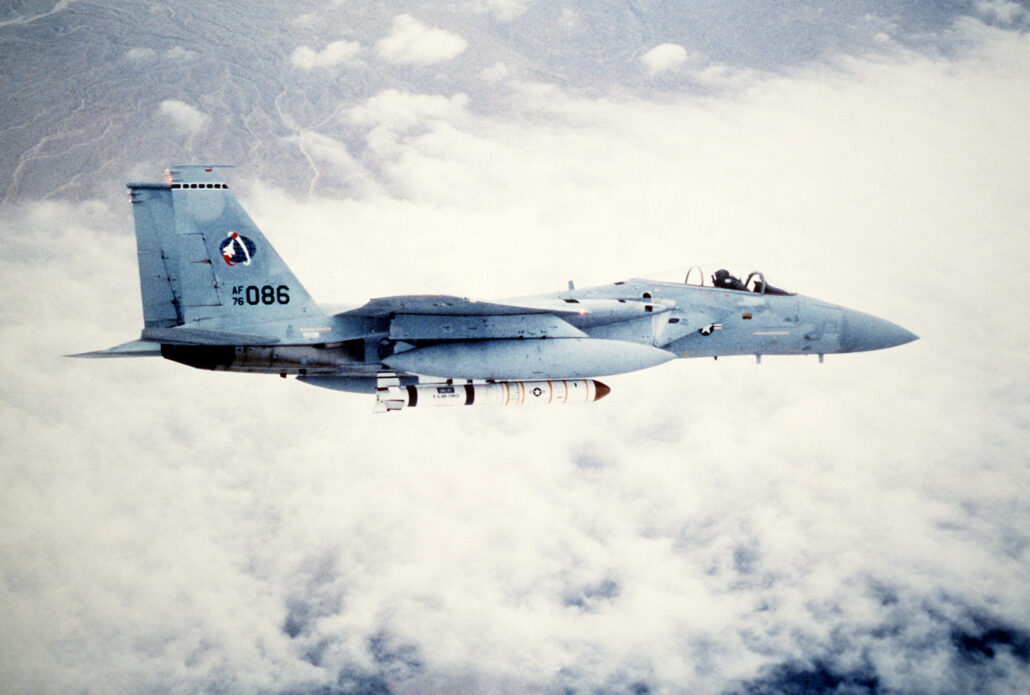
On 20 August 1985 President Reagan authorized a test against a satellite. The test was delayed to provide notice to the United States Congress. The target was the Solwind P78-1, an orbiting solar observatory that was launched on 24 February 1979.
On 13 September 1985, Maj. Wilbert D. “Doug” Pearson, flying the “Celestial Eagle” F-15A 76-0084 launched an ASM-135 ASAT about 320 kilometres (200 mi) west of Vandenberg Air Force Base and destroyed the Solwind P78-1 satellite flying at an altitude of 555 kilometres (345 mi). Prior to the launch, the F-15 — flying at Mach 1.22 — executed a 3.8 g0 (37 m/s2) zoom climb at an angle of 65 degrees. The ASM-135 ASAT was automatically launched at 11,600 metres (38,100 ft) while the F-15 was flying at Mach 0.934 (992.2 km/h; 616.5 mph). The 14 kilograms (30 lb) MHV collided with the 910 kilograms (2,000 lb) Solwind P78-1 satellite at closing velocity of 24,000 kilometres per hour (15,000 mph; 6.7 km/s).
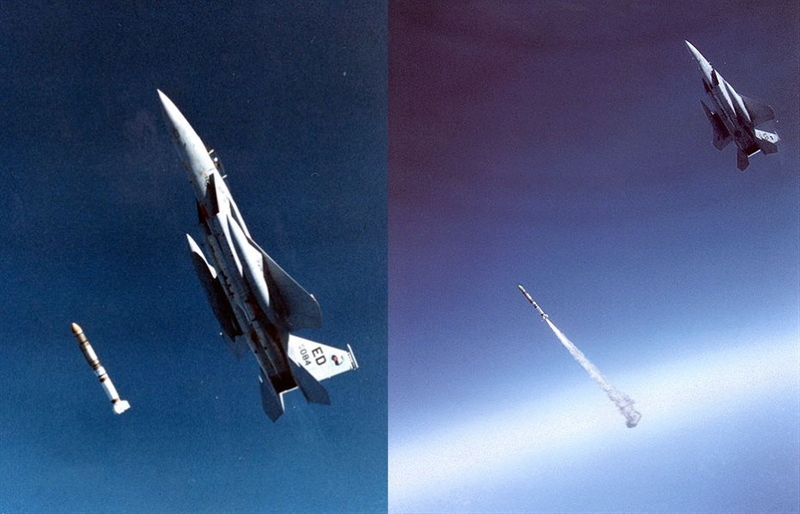
NASA learned of U.S. Air Force plans for the Solwind ASAT test in July 1985. NASA modeled the effects of the test. This model determined that debris produced would still be in orbit in the 1990s. It would force NASA to enhance debris shielding for its planned space station.
Earlier the U.S. Air Force and NASA had worked together to develop a Scout-launched target vehicle for ASAT experiments. NASA advised the U.S. Air Force on how to conduct the ASAT test to avoid producing long-lived debris. However, congressional restrictions on ASAT tests intervened.
In order to complete an ASAT test before an expected Congressional ban took effect (as it did in October 1985), the DoD chose to use the existing Solwind astrophysics satellite as a target.
The Solwind test had three important results:
- It raised the possibility that the objects optical systems were detecting were large and dark, not small and bright as was generally assumed. This had implications for the calibration of optical and radar orbital debris detection systems.
- The test also created a baseline event for researchers seeking a characteristic signature of a hypervelocity collision in space.
- Awareness was raised about the orbital debris problem.
Fifteen ASM-135 ASAT missiles were produced and five missiles were flight tested
| Flight number | Date | Description |
|---|---|---|
| 1 | 21 January 1984 | Missile successfully tested without miniature vehicle |
| 2 | 13 November 1984 | Missile failed when MHV was directed at a star. |
| 3 | 13 September 1985 | Missile successfully destroys the satellite P78-1 Solwind |
| 4 | 22 August 1986 | Missile successfully tested when MHV was directed at a star. |
| 5 | 29 September 1986 | Missile successfully tested when MHV was directed at a star. |
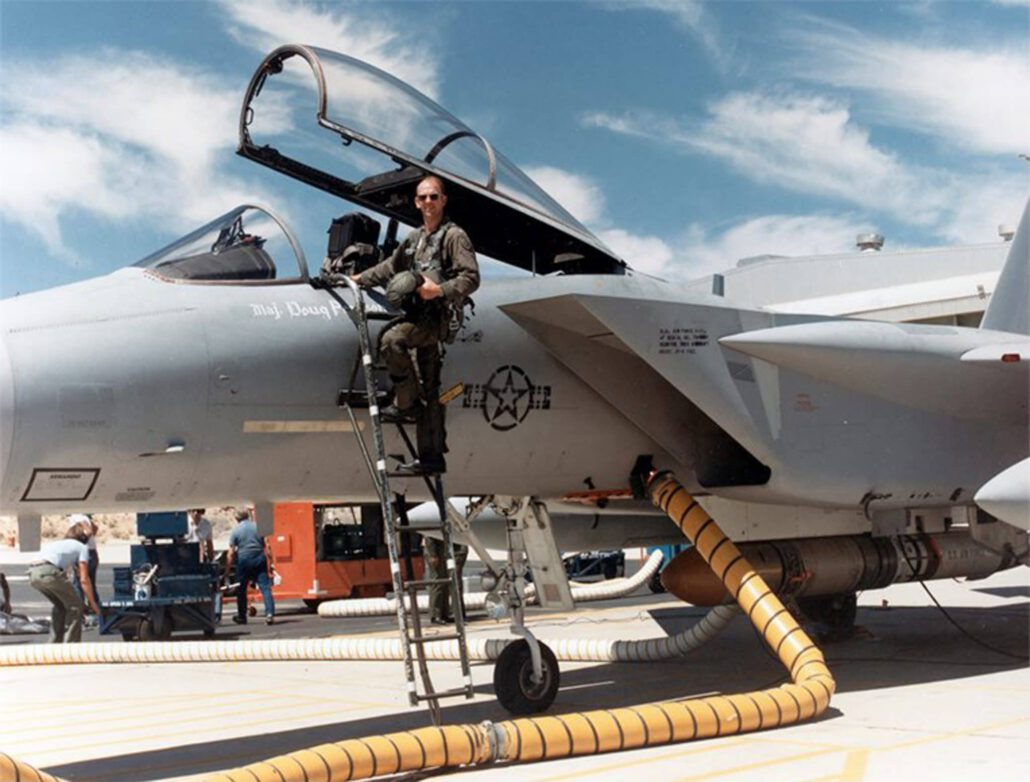
The USAF intended to modify 20 F-15A fighters from the 318th Fighter Interceptor Squadron based at McChord Air Force Base in Washington and the 48th Fighter-Interceptor Squadron based at Langley Air Force Base in Virginia for the anti-satellite mission. Both squadrons had airframes modified to support the ASM-135 by the time the project was cancelled in 1988.
The USAF had planned to deploy an operational force of 112 ASM-135 missiles.
The deployment of the ASM-135 was central to a policy debate in the United States over the strategic need for an anti-satellite weapon and the potential for anti-satellite weapon arms control with the Soviet Union. Starting in 1983, Congress placed various restrictions on the ASM-135 program,and in December 1985, banned testing the ASM-135 on targets in space. This decision was made only a day after the Air Force sent two target satellites into orbit for its next round of tests. The Air Force continued to test the ASAT system in 1986, but stayed within the limits of the ban by not engaging a space-borne target.
In the same year the deployment of the ASM-135 was estimated to cost $US5.3 billion up from the original $US500 million estimate. The USAF scaled back the ASM-135 program by two-thirds in attempt to control costs. The USAF also never strongly supported the program and proposed canceling the program in 1987.In 1988, the Reagan Administration canceled the ASM-135 program because of technical problems, testing delays, and significant cost growth.
